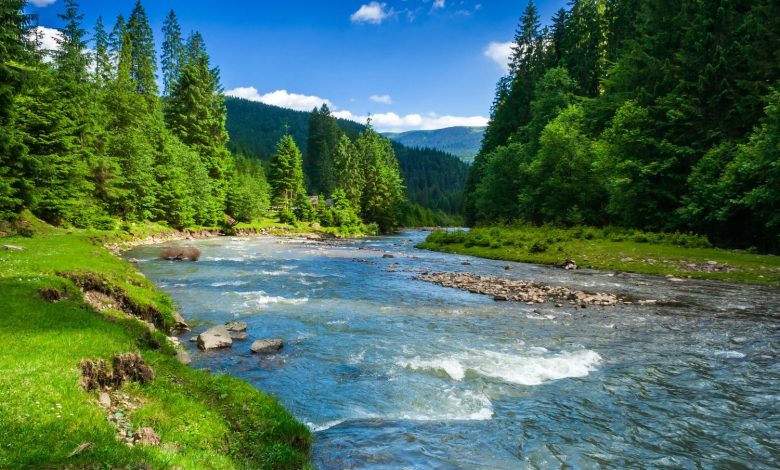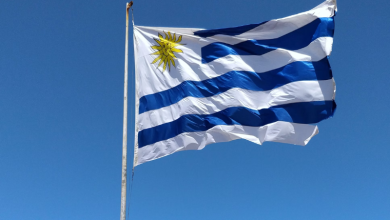New: Environmental Excellence Lies in Indigenous Lands

Today, the world is facing various issues after the COVID pandemic is endless war! Russia-Ukraine war, Middle Eastern tension between Israel and Hamas, whole region is facing many political and economic issues.
Let’s embark on a remarkable journey that unveils the often-overlooked secret to environmental excellence: Indigenous Lands. As caretakers of Mother Earth for centuries, indigenous communities have long understood the delicate balance between humanity and nature.
The Indigenous Karen people of southeast Myanmar have lived in the hilly forests that are a part of the Indo-Burma biodiversity hotspot in relative peace for almost two millennia. However, over the last 70 years, the Karen National Union and the military regime in Myanmar have engaged in the longest-running armed conflict in history, a struggle for self-determination that is a component of the larger civil war in Myanmar. This conflict has entangled Karen civilians.
They seek safety in the forests that their ancestors once managed, using them to escape the military regime’s frequent and lethal airstrikes on their villages, schools, and hospitals.
According to Casper Palmano, a program adviser at the nonprofit Karen Environmental and Social Action Network (KESAN), based in neighboring Thailand, “they have these safe places to escape to whenever the Burmese army has come in the past because they’ve been protecting the forest and maintaining biodiversity.”
Armed conflicts within a hotspot for biodiversity, such as those experienced by the Karen people, are not limited to Myanmar, the former name of Burma. Nine out of ten significant armed conflicts that took place between 1950 and 2000 took place in nations with abundant biodiversity. Deforestation, widespread biodiversity loss, and other negative environmental effects have resulted from more than 80% of these conflicts in the hotspots.
Read More: Gulf of Mottama Project: A Game-Changer for Biodiversity Conservation
Furthermore, a recent study published in the journal Biological Conservation found that over the past 70 years, a disproportionately higher number of these armed conflicts—roughly four-fifths—have also taken place on the lands of Indigenous peoples inside a biodiversity hotspot. Indigenous peoples experience irreversible changes to their economies and societies, including forced relocation, indiscriminate killings, and cultural disintegration.
These lands suffered from less environmental degradation and human impact despite the conflicts than other lands under similar external pressures that were not recognized as Indigenous lands.
According to the study, 25% of the areas on Indigenous lands affected by conflicts within biodiversity hotspots were classified as “natural lands,” meaning they had not been altered by humans and were therefore likely to support biodiversity. Comparatively, “natural lands” made up only 10% of other areas that were involved in armed conflicts.
Indigenous lands affected by conflict also showed a lower human footprint than other conflict-affected lands in biodiversity hotspots. According to the study, this is because of the challenging terrain and long-standing ties that Indigenous communities, like the Karen people of Myanmar, have with their ancestral lands.
Corresponding author Stephen Garnett of Charles Darwin University in Australia told Mongabay, “We knew that biodiversity and environmental conditions were better on Indigenous peoples’ lands, but the fact that we got this result for so many different conflict situations was a real surprise for me.”
Causes of armed confrontations in the different parts of the globe
Native American lands have been targeted more and more for development and exploitation in recent years, as they contain many of the last untapped resource pockets on the planet.
“Those are places where people have a very loving relationship with their surroundings, and because of that, the environment is still relatively unspoiled,” says Nikita Bulanin, who is not connected to the study and works for the nonprofit International Work Group for Indigenous Affairs (IWGIA).
She tells Mongabay that there are many commercial interests surrounding these Indigenous lands because, in other places, the resources have been completely depleted.
According to the study, Indigenous lands were found in 31 out of the 36 identified global biodiversity hotspots. Of them, 79% have been involved in armed conflicts in the last few decades. By comparison, armed conflicts occurred in just half of the other lands within biodiversity hotspots.
The Karen people live in the Kayin state of Myanmar, and the conflicts there are centered around their resource-rich territories. These regions have rivers suitable for hydroelectric dam projects, the best teak forests in the world, and mineral resources like gold. Paul Sein Twa, co-founder and executive director of KESAN, states that “powerful politicians and [the] army want to control the territory and exploit and make money.” “We find ourselves caught between.”
When Mongabay reached out to the Departments of Defence and Environment in Myanmar for comment, they had not responded by the time of publication.
Poverty forces people in some Indigenous communities into the “grey,” or unofficial, economy, where they overuse resources they used to take care of or get involved in new conflicts. Conflicts between and within Indigenous communities may result from this. Tensions rise when governments forcibly remove people from their lands to carry out conservation plans or expand their territorial control.
Furthermore, according to David Berger, an advisor at the IWGIA, there is significant collateral damage, including to the environment, when armed conflict breaks out in any kind of setting.
To carry out the study, the researchers searched for regions that intersected by analyzing spatial data of Indigenous lands, biodiversity hotspots, and 265 armed conflicts that have occurred since the 1940s throughout South Asia, South America, Africa, Southern Europe, and the Middle East. Then, by measuring the human impacts that were seen there, such as the development of roads, railroads, waterways, croplands, and pastoral lands, the built environment, commercial activity, and artificial light pollution, they were able to estimate the environmental quality of these intersected lands.
They then computed that the proportion of natural lands in indigenous territories within conflict-affected biodiversity hotspots was more than twice that of other lands.
As someone who studies political ecology and wars and was not involved in the current study, Philippe LeBillon of the University of British Columbia in Canada, says, “This demonstrates the importance of recognizing Indigenous land rights, including in some of the most difficult contexts such as armed conflicts.”
The study provides a global picture of how Indigenous lands in biodiversity hotspots are impacted by armed conflicts; however, recent data for some of the regions under investigation were not available. However, Garnett notes, “We think the overall picture [from the study] is reasonable.”
According to Berger, the results are consistent with field observations. The research community should endeavor to update such crucial data sets and measurements, he says, adding that he’s not sure the IWGIA can corroborate it with the data it has available.
Ways to promote peace in biodiverse conflict areas
The first step in aiding the conservation of biodiversity in the impacted areas would be to put an end to armed conflicts, which would be a difficult task. However, allowing Indigenous people to make their own decisions and include them in resource-based initiatives could help keep peace in areas of conflict.
Working together on conservation initiatives would also address the underlying causes of conflicts rather than uprooting communities or ending their means of subsistence.
Conservation International study co-author Madeline Beattie says, “Instead of looking to Indigenous partners to lead and direct and be the ones who are guiding us in conservation work.”
According to Bulanin of the IWGIA, who cites the highly regarded Salween Peace Park in Myanmar as an example, indigenous peoples can come up with innovative solutions to problems when they are left alone. KESAN and other local organizations created the 5,485 square kilometers (2,118 square miles) park in 2018 to lead the way in the region for peace, conservation, and self-determination. But lately, the park has become embroiled in the ongoing civil war in Myanmar.
According to the study’s authors, a peace plan is also necessary to protect the biodiversity hotspot after hostilities have mostly subsided.
After a conflict, there is typically more environmental degradation because more land becomes available and capital is drawn to extractive industries. Then, LeBillon writes to Mongabay via email, it becomes even more imperative to uphold Indigenous rights and safeguard environmental defenders.”



